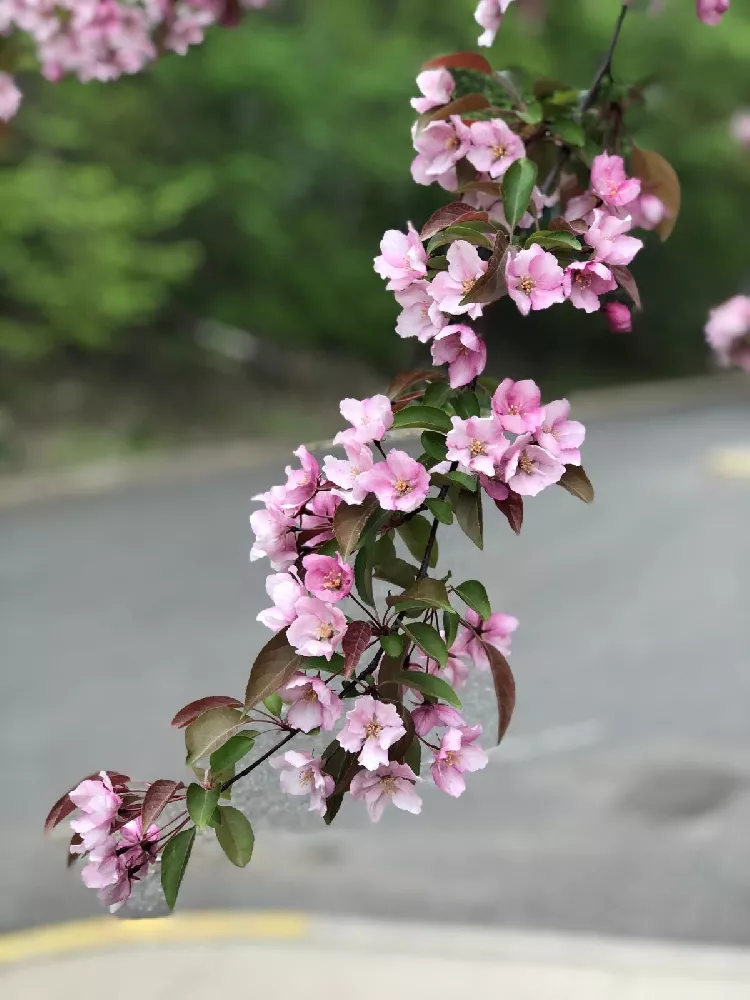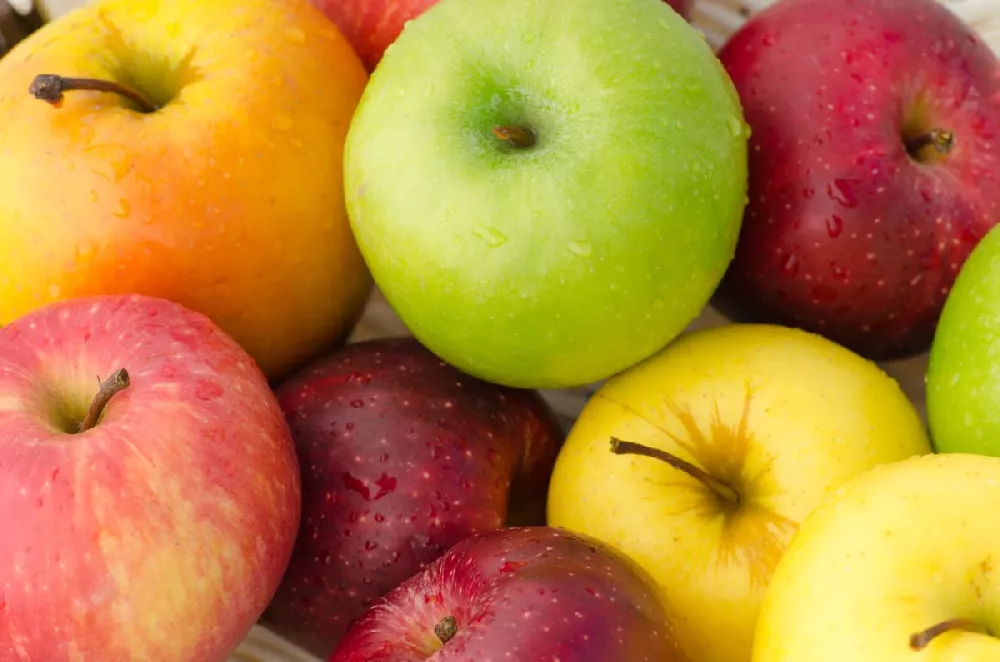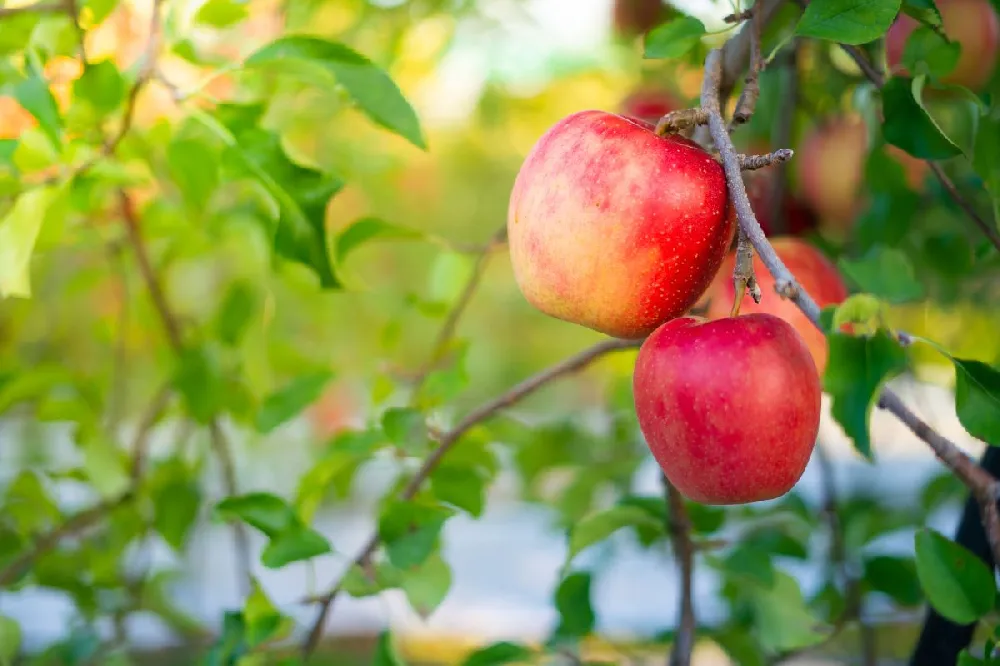Brandywine Crabapple Tree for Sale - Buying & Growing Guide
Among a plant family known for its attractive trees, the Brandywine Crabapple, Malus 'Brandywine,' stands out. This cultivar provides interest in the garden during all four seasons, but in spring, it is simply spectacular, with profuse soft pink, fragrant double flowers that last up to a month. The Brandywine Crabapple is no slouch in the other three seasons, either. In summer, the branches are hung with large, cherry-like fruits that are beloved by birds and can be used in cooking. The pointed leaves turn a deep purplish-red in fall, and in winter, the attractive silver-hued bark adds winter interest to the garden. The tree needs little extra care or specialized pruning and is an easy addition to the garden or landscape. Here are a few more reasons to love the Brandywine Crabapple:
- In summer, the dark green leaves are tipped with red.
- Attracts pollinators such as bees and butterflies.
- Resistant to most diseases that are common to crabapple trees.
Enter your zip code to find nearby stores that may carry this plant.
Plant Care
Sunlight

Plant your Brandywine Crabapple where it will receive full sun: six or more hours of direct sunlight a day.
Watering
When the tree is young, water it weekly; mature trees need watering only during droughts.
Fertilizing

Fertilize in early spring with a slow-release, balanced product designed for landscape trees and shrubs.
Planting and Care
Watering and nutrients
Site your tree where it will receive at least six hours of direct sunlight a day, in soil that drains well. Unpot your sapling and tease out any encircling roots, which can wrap around the tree and slowly kill it. Dig a hole that’s as deep as the root ball and twice as wide. Place the tree in the hole, spreading out the roots. Holding it upright and steady, fill in around the roots with topsoil mixed with well-rotted manure or compost, tamping down as you go to eliminate air pockets. Water thoroughly. Apply a two to three-inch layer of organic mulch such as bark chips around the root zone to conserve moisture and hinder weed growth but keep it from touching the trunk to avoid problems with rot.
Pollination
Crabapples are effective pollinators, and their profuse flowers attract bees and other pollinating insects easily. In fact, crabapples are often used as pollinators for apple trees. Although your Brandywine Crabapple will produce fruit if you only have one tree, it will have a larger harvest if you plant two or more in near proximity to each other.
Pruning
Unlike apple trees, the Brandywine Crabapple needs minimal pruning. Trim out any dead, diseased or damaged limbs whenever you see them. If any suckers grow from the base of the trunk, these can be removed also. Other than that, the tree should develop an attractive rounded canopy without supplemental pruning.
Pests, diseases, and animals
The Brandywine Crabapple has good resistance to most diseases that occur on crabapples but keep an eye out for scab and rust, which are both fungal. Scab may present as green or yellow spots on the leaves, while rust forms bright yellow-orange spots that are clearly defined and one-eighth to one-quarter inch in diameter. Fungicides may help with both diseases. Insects that may appear on your crabapple include spider mites, tent caterpillars and aphids, but a healthy tree should be able to fend off infestations with little difficulty.
Harvesting
If you wish to harvest the fruit of your Brandywine Crabapple tree, wait until they are about the size of a cherry, with a red blush. Cut one open and check the seeds: if they are brown, then they are ready to pick. They are best picked by hand and stored in a cool location until use.
Achieving maximum results
Knowing how to use a Brandywine Crabapple in your garden or landscape is one way to achieve maximum results. They are well-suited to use in a front yard or another highly visible spot since they are attractive trees that put on a spectacular flower show in spring. Consider a planting of three or five near each other on a larger front lawn, underplanted with a shade-loving ground cover such as hostas or lilyturf. They are also attractive as the central planting in a formal cottage garden and can be effectively used in a foundation planting bed as long as they are not placed too near a home or other building.
FAQs
Where can I grow the Brandywine Crabapple?
This ornamental tree is hardy throughout much of the U.S. and can be grown in USDA hardiness zones four through eight. That means they can be planted anywhere that doesn't see temperatures below -20 degrees Fahrenheit, which includes all but the northern parts of New England and the Midwest. They can be grown as far south as northern Florida or Texas.
How can the fruit be used in cooking?
Generally, they are not eaten raw as you would an apple, but crabapples can be used in most recipes that call for apples. They are especially known to make excellent jam and jelly but can also be used in fruit butter, crisps, fruit leathers and more. They can even be used to make a refreshing drink.
Are crabapples toxic?
No, not to humans. However, it's not wise to allow your companion animals to eat them due to the small traces of cyanide that are in the seeds, leaves and stems. Avoid planting a crabapple tree in any pasture where you keep horses, for the same reason.
Compare Similar Products
You can't add more Product Name - Product size to the cart.
OK








